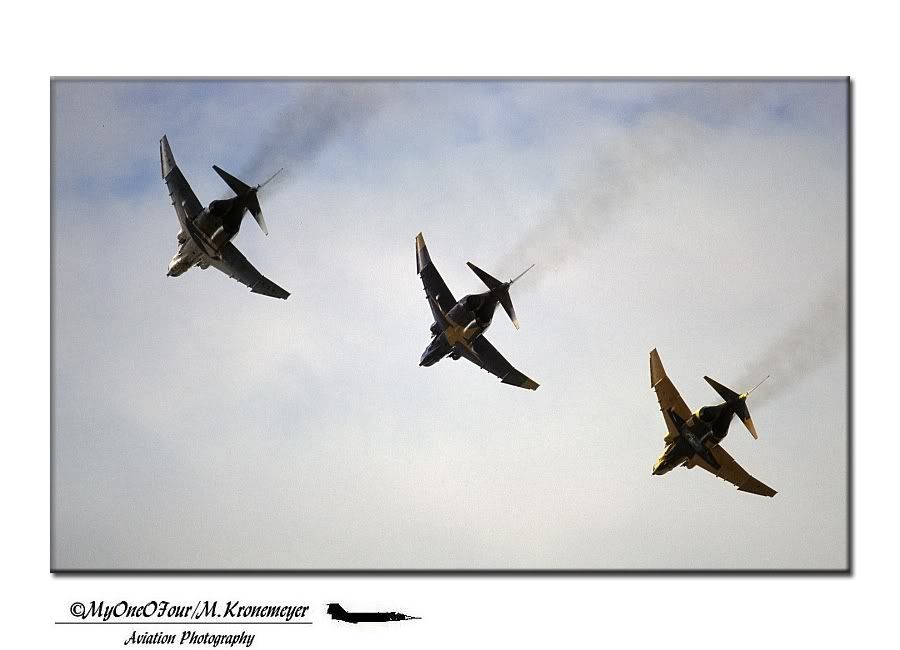This very nice story was sent to me by a former Missouri ANG pilot (Matthew Riehl) who saw a photo of 'his' F-4C at Airliners.net. First the photo (that was published here before I think).

I was stationed with the St. Louis Air National Guard years ago and the aircraft in your photo (64-0838) was assigned to the unit at the time. I kind of considered 838 to be mine, as I had a memorable flight in it.
While there at the St. Louis airport I used to watch the F-15s from the McDonnell Douglas factory depart the aerodrome using what they called the "Viking Departure". This departure was a takeoff, a pull to the pure vertical, and a VFR climb out of the top of the TCA. Well, being a (young and dumb) Lieutenant I always thought that it would be cool to do a Viking departure in my beloved Phantom. Of course being encumbered by wing tanks, pylons, TERs, and AIM-9 rails that was never going to happen.
Then one cold and cloudy December day in 1984 I was given the privilege of flying 838 to McConnell AFB for it's heavy maintenance check. I was told that the aircraft would be, other that the bare inboard pylons, be completely clean. I figured that if there was ever going to be a chance to do a Viking Departure in a Rhino, that was going to be it. It was about 20°F outside (plenty of nice thick air) and there was an overcast layer at 9,000 ft AGL (which turned out to be a Godsend).
As I got my flight clearance I asked for a Viking Departure (did I mention that I was a young and dumb Lieutenant at the time?). I had told no one of my plans because I didn't want to be told not to try it. Well, Clearance Delivery told me that the Viking Departure was a special arrangement between the Airport and McDonnell Douglas and wasn't available to other aircraft, at which point my heart sunk. But the they said that I could have an unrestricted climb to 10,000 ft. Good enough for me! We (I had a crew chief in the back seat) taxied out to the short crossing runway for takeoff. When cleared for takeoff I ran the engines up as much as possible prior to break release. After brake release and full AB it took only 2,000 ft to get airborne. I sucked up the gear, left the flaps down (leading edge BLC is a wonderful thing), and accelerated to 250 knots - which took another 2,000 ft or so. This put me about in mid-field. At that point we pulled up smartly to 80° nose high for the climbout. I was proud of the old girl that day, she gave me her best. I remember looking into the outside mirrors and seeing the whole airfield laid out behind me. With the clean configuration and the dense cold air we made the clouds still at 80° nose high - barely. As we punched into the clouds I remember seeing an indicated airspeed of about 120 knots. That's not a great airspeed to be at in a hard wing Rhino. But the combination of hanging on the burners and the extended flaps with the BLC saved the day. This was the only true time I ever did slow flight in an aircraft. I very gingerly nosed the aircraft over as the airspeed started to climb. The only thing running through my mine was "don't depart and fall back down out of the clouds, don't depart and fall back down out of the clouds". Luckily we didn't. The speed slowly built back up to a safe, normal airspeed and we continued on our way. I don't think the crew chief even knew what we had just done (it was his first flight).
Well, no one ever claimed that Lieutenants were exceptionally smart. But I had my "Viking Departure" and a memory that'll last me a lifetime. Interestingly, I notice in your photo that the aircraft shows a MiG kill on it's intake. We never knew that at St. Louis and it was never marked as such.
The kill was earned on 2 January 1967 when the F-4 downed a MiG-21















